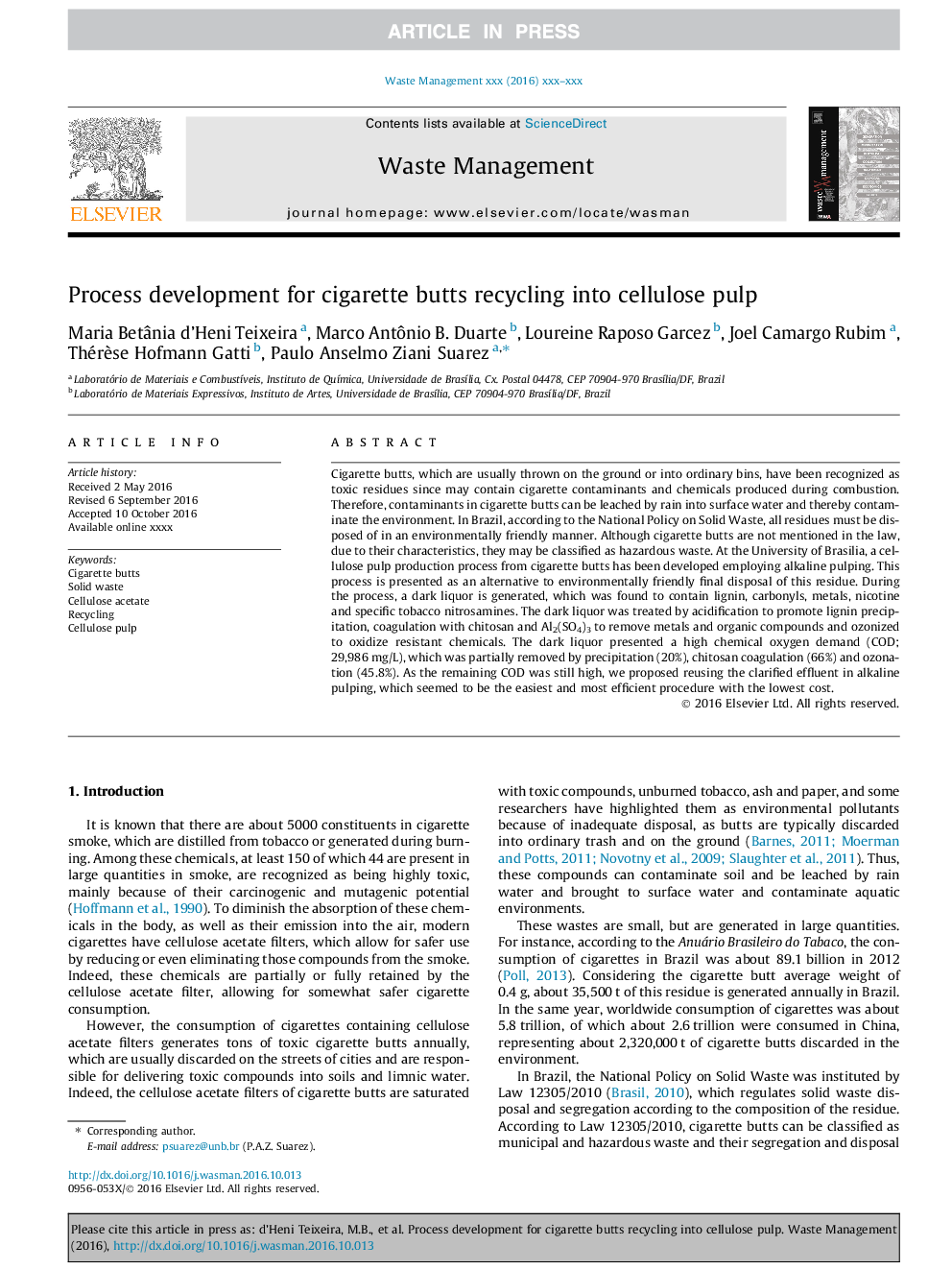| Article ID | Journal | Published Year | Pages | File Type |
|---|---|---|---|---|
| 5756775 | Waste Management | 2017 | 11 Pages |
Abstract
Cigarette butts, which are usually thrown on the ground or into ordinary bins, have been recognized as toxic residues since may contain cigarette contaminants and chemicals produced during combustion. Therefore, contaminants in cigarette butts can be leached by rain into surface water and thereby contaminate the environment. In Brazil, according to the National Policy on Solid Waste, all residues must be disposed of in an environmentally friendly manner. Although cigarette butts are not mentioned in the law, due to their characteristics, they may be classified as hazardous waste. At the University of Brasilia, a cellulose pulp production process from cigarette butts has been developed employing alkaline pulping. This process is presented as an alternative to environmentally friendly final disposal of this residue. During the process, a dark liquor is generated, which was found to contain lignin, carbonyls, metals, nicotine and specific tobacco nitrosamines. The dark liquor was treated by acidification to promote lignin precipitation, coagulation with chitosan and Al2(SO4)3 to remove metals and organic compounds and ozonized to oxidize resistant chemicals. The dark liquor presented a high chemical oxygen demand (COD; 29,986Â mg/L), which was partially removed by precipitation (20%), chitosan coagulation (66%) and ozonation (45.8%). As the remaining COD was still high, we proposed reusing the clarified effluent in alkaline pulping, which seemed to be the easiest and most efficient procedure with the lowest cost.
Related Topics
Physical Sciences and Engineering
Earth and Planetary Sciences
Geotechnical Engineering and Engineering Geology
Authors
Maria Betânia d'Heni Teixeira, Marco Antônio B. Duarte, Loureine Raposo Garcez, Joel Camargo Rubim, Thérèse Hofmann Gatti, Paulo Anselmo Ziani Suarez,
